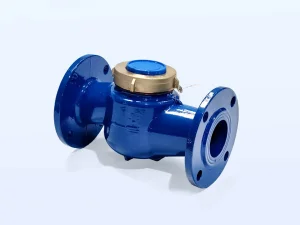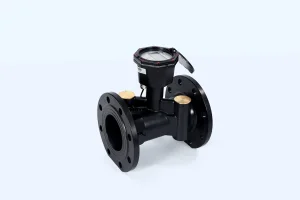
لتحقيق الدقة عندما تثبيت مقياس المياه أجهزة، يجب عليك التحقق بعناية من المحيط. تأكد من أن المنطقة نظيفة وسهلة الوصول وآمنة من الطقس القاسي. قم بإزالة الأنابيب من الأوساخ قبل إعداد العداد. الحفاظ على أطوال الأنابيب المستقيمة المناسبة - 10 أضعاف عرض الأنابيب في المصب و 5 أضعاف في المصب - لتدفق المياه المستمر. اختر بين عدادات ميكانيكية، والتي هي صديقة للميزانية وتحتاج إلى وضع أفقي ، أو مقاييس الموجات فوق الصوتية ، والتي هي أكثر دقة وليس لديها أجزاء متحركة. تثبيت مقياس مسطح مع الشاشة موجهة للأعلى. تجنب تقلص أحجام الأنابيب وضمان ضغط المياه والتدفق الصحيح. قم بمعايرة العداد في البداية وبعد ذلك بانتظام. استخدم الميزات الذكية للتتبع عن بعد واتبع القواعد مثل GB / T778.2-1996. الصيانة المنتظمة وإصلاح المشاكل مثل التسربات أو الانسدادات أمر حيوي لدقة دائمة.
قبل تثبيت مقياس المياه أجهزة، فحص الموقع عن كثب. يجب أن يكون الموقع مرتبًا وجافًا ومحميًا من أشعة الشمس أو البرد أو الأوساخ أو الفيضانات. هذه الظروف يمكن أن تضر بالمقياس. اختر مكانًا سهل الوصول إليه للقراءة أو استبدال الجهاز. ابقى بعيدًا عن المناطق التي تحتوي على المواد الكيميائية الضارة أو الصرف الصحي السيئ.
أيضًا ، شطف الأنابيب بدقة قبل الإعداد. إزالة أي رواسب لمنع الانسدادات. هذه الخطوة تحمي الأجزاء الداخلية للمقياس من الضرر.
وضع الأنابيب الصحيح هو المفتاح للقراءات الصحيحة. متى تثبيت مقياس المياه الأجهزة ، يجب أن يكون الأنبوب المستقيم قبل العداد على الأقل 10 أضعاف عرض الأنبوب. يجب أن يكون الأنبوب المستقيم بعد العداد على الأقل 5 أضعاف العرض. هذا الإعداد يحافظ على تدفق المياه على نحو سلس ويمنع الدوارة التي يمكن أن تفسد القياسات.
يجب أن يكون للأنابيب قبل وبعد العداد نفس العرض. لا تستخدم أنابيب أصغر ، لأن هذا يمكن أن يسبب أخطاء.
مطابقة حجم العداد لمعدل تدفق المياه أمر حاسم. إذا لم يتناسب حجم المقياس مع التدفق ، فقد يعطي قراءات خاطئة أو يتلف. على سبيل المثال ، يفوت متر كبير جدا تدفقات صغيرة. لا يستطيع العداد الصغير جداً التعامل مع التدفقات الثقيلة وقد ينكسر.
ضغط المياه مهم أيضا. عادة ما يبقى ضغط إمدادات محطة المياه أقل من 30 مترا. إذا كان العداد صغير جدا، فقد يفقد الكثير من الضغط. وهذا يمكن أن يؤدي إلى انخفاض إمدادات المياه للمستخدمين.

اختيار المقياس المناسب يعتمد على احتياجاتك. العدادات الميكانيكية، مثل مقياس المياه LXSوهي معقولة التكلفة وتعمل بشكل جيد مع المياه القذرة. ومع ذلك ، يجب تثبيتها مسطحة. مقياس المياه الدوارة LXS مشهور للأنابيب الصغيرة في الصين ، لكنه يحتاج إلى إعداد أفقي دقيق.

مقاييس الموجات فوق الصوتيةمثل هؤلاء من تشن شوولا توجد أجزاء متحركة. إنها دقيقة للغاية وتستمر لفترة أطول، حتى مع تغير معدلات التدفق. ومع ذلك، يجب عليك اختيار الحجم الصحيح بناء على كمية المياه التي تستخدمها. متى تثبيت مقياس المياه الأجهزة مثل تلك الموجات فوق الصوتية، اتبع قواعد الإعداد الصارمة لأفضل النتائج.
العدادات الذكية مع القراءة عن بعد توفر الوقت والجهد. تتيح لك التحقق من استخدام المياه في الوقت الحقيقي. في الأماكن التي يكون فيها الأسلاك صعبة ، مثل الأحياء القديمة ، تعمل العدادات الذكية اللاسلكية بشكل جيد.
يمكنك استخدام مقياس المياه بالموجات فوق الصوتية تشن شوو لهذه الميزات. يدعم الأنظمة البعيدة مثل AMR / AMI ويبقى دقيقا حتى مع تدفق المياه غير المتساوي.
طريقة وضع العداد مهمة للغاية. جميع عدادات المياه التي تستخدمها شركتنا يجب أن تكون مسطحة ، مع عرض موجه للأعلى. الموقع الخاطئ يمكن أن يجعل المقياس أقل حساسية أو يسبب فشله.
إذا كان المساحة ضيقة أو الأنابيب تعمل عموديا، اختر مقياس مصمم للاستخدام العمودي. ولكن لا تفعل ذلك إلا إذا سمح المنتج بذلك.
الأخطاء مثل الختم السيئ أو وضع الطقق الخاطئ يمكن أن تسبب تسريبات أو قراءات سيئة. تأكد من أن حلقات الختم الشفافية لا تلتصق بالأنابيب أو تجلس بشكل غير صحيح. تجنب وضع العداد في نقاط عالية في الأنابيب حيث تتجمع فقاعات الهواء. الهواء يمكن أن يؤدي إلى قراءات كاذبة.
لتجنب مشاكل الاهتزاز أو التداخل الكهربائي ، والتي يمكن أن تحرك مؤشر العداد ، قم بتركيب العداد على سطح ثابت. ابعدها عن الآلات الكبيرة أو خطوط الكهرباء.
معايرة العداد في البداية تضمن أنه يلبي القواعد. يجب التحقق من العدادات المنزلية من قبل الوكالات الرسمية قبل الاستخدام. متى تثبيت مقياس المياه تحتاج الأجهزة إلى فحص أولي من قبل مجموعة معتمدة.
وتشمل المعايرة التحقق من مظهر العداد، واختبار التسربات عند 1.6MPa لمدة 60 ثانية، والتحقق من أخطاء التدفق في مستويات الربع الأول والربع الثاني والربع الثالث. هذه الاختبارات تتأكد من أن أخطاء العداد ضمن الحدود المسموح بها.
تحتاج العدادات الصناعية إلى إعادة المعايرة بانتظام لأنها تتآكل بشكل أسرع. تتبع الوكالات المحلية قواعد JJG 162-2019 وتستخدم أدوات الفئة 0.2 للحصول على نتائج دقيقة.
للاستخدام المنزلي، تعتمد إعادة المعايرة على القوانين المحلية. عادة ما يحدث كل 5 إلى 8 سنوات ، بناء على مقدار استخدام العداد.
تتيح لك العدادات الذكية مع ميزات عن بعد تتبع استخدام المياه عبر الشبكة. وهذا يساعد على اكتشاف التسربات والتنبؤ باحتياجات المياه.
باستخدام تشن شوو القراءة عن بعد بالموجات فوق الصوتية مقياس المياهيمكنك الاتصال بأنظمة AMI. هذه تنبيهك من استخدام المياه غير العادي أو التسربات، حتى في الأماكن الصعبة الوصول إليها مثل المناطق تحت الأرض أو المباني الكبيرة.
التقاط الفحوصات المنتظمة مشاكل مبكرة، مثل الأوساخ في الفلاتر أو مشاكل المؤشر من الاهتزاز. مع مرور الوقت ، يمكن أن تزيد الانسدادات من الأخطاء ، لذلك هناك حاجة إلى إعادة المعايرة.
تحقق من الختم في كثير من الأحيان. قد تظهر الختم المكسور التلاعب أو الإجهاد من تحول الأنابيب بسبب التغيرات الحرارية.
إذا تحرك مؤشر المقياس عندما لا يستخدم الماء، تحقق من تغيرات الضغط أو التدفق العكسي. قد يسبب صمام التحقق المفقود هذا. إذا استمر العداد في التحرك بعد إيقاف جميع الصنابير ، فقد يكون صمام التحقق مفقودًا أو وضعًا خاطئًا.
استبدل الأجزاء المكسورة بسرعة إذا لم تؤدي إعادة المعايرة إلى إصلاح الدقة في حدود 1٪ - 2٪ ، حسب درجة العداد.
متى تثبيت مقياس المياه الأجهزة ، اتبع قواعد GB / T778.2-1996 بدقة. وتشمل هذه الموقع الصحيح ، وطول الأنابيب المستقيم الكافي ، ومواءمة السهم مع تدفق الماء ، وإضافة ختم الرصاص بعد الإعداد. يجب اتباع المعيار الوطني لتركيب عداد المياه بالضبط وفقًا لـ GB / T778.2-1996.
تحريك العداد بدون إذن يخالف كل من القواعد التقنية والقانونية. لا يمكن لأحد تفكيك أو تحريك مقياس دون موافقة.
نعم ، تجتاز المنتجات اختبارات مصنع صارمة ، بما في ذلك فحص التسرب عند 1.6MPa لمدة دقيقة واحدة على الأقل. كما يخضعون لفحوصات بصرية للحصول على العيوب. يجب ألا يكون للمنتجات التي تم اختبارها أي تسريبات وعلامات واضحة وكاملة.
يتم اختبار المقاييس مع بطاقات IC أو الميزات البعيدة لضمان عمل أجزائها الإلكترونية ضمن حدود الخطأ المسموح بها.
Q1: هل يمكنني تثبيت مقياس ميكانيكي من الدرجة السكنية في بيئة صناعية؟
ج: لا، عدادات المنزل ليست قوية بما فيه الكفاية لتدفقات المياه الصناعية الثقيلة والضغوط. دائما مطابقة مواصفات العداد للاستخدام الفعلي.
س2: لماذا يظهر مقياسي الجديد الاستخدام حتى عندما تكون جميع الصنابير مغلقة؟
ج: قد يعني هذا تسرب في المصب أو صمام فحص مفقود ، مما يسبب تدوير العداد إلى الخلف.
س3: هل من الضروري تثبيت الفلاتر حتى لو بدا خط الأنابيب نظيفاً؟
ج: نعم ، يمكن أن تتراكم الأوساخ مع مرور الوقت وتحجب أجزاء المقياس ، مما يؤدي إلى قراءات خاطئة.